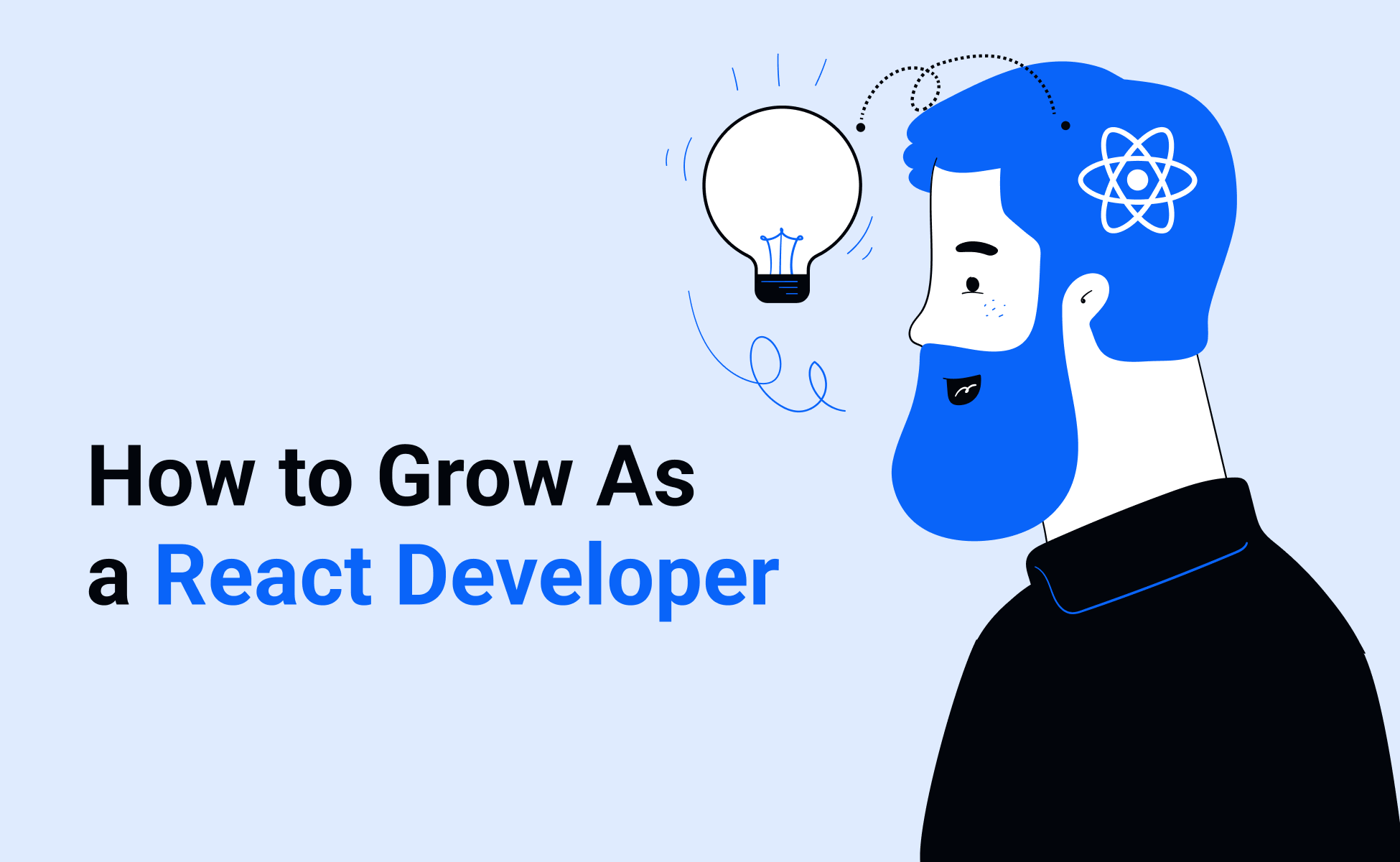Working with React for years but feeling stuck in your career? Lacking depth or direction? Here are some hard-earned lessons and practical tips to help you grow, stand out, and move forward.
Master Core Programming Fundamentals
To grow as a React developer, stop skipping the fundamentals. Spend time learning core programming concepts — not just in JavaScript, but in a language-agnostic way. Focus on basic data structures (arrays, trees, maps), algorithms (sorting, searching), and essential CS concepts like logic, complexity, and modeling.
Understanding these fundamentals will help you make better decisions when choosing between different React patterns and optimize your code more effectively. When you understand how data structures work under the hood, you’ll write more efficient components and avoid common performance pitfalls.
Strengthen Your Frontend Foundation
Strengthen your frontend skills by studying deeper the parts you take for granted: HTML, CSS, Web APIs, browser internals, and how the DOM actually works. Many React developers rush into frameworks without understanding what’s happening beneath the surface.
Read the React Docs
Although it’s kinda obvious, one of the fastest ways to level up as a React developer is just read the official React documentation. Not skim it, but actually sit down and read through it. Yeah, it might feel boring at first, but they’re packed with insights that’ll make everything else click.
The docs are written by the React team and teach you not only how to use the framework, but why it works the way it does. You’ll get clear mental models around state, rendering, component trees, and effects — and avoid common mistakes that lead to bugs and unmaintainable code.
Read Good Code and Contribute
One of the fastest ways to grow as a developer is by reading the source code of the libraries you use every day. Dig into projects like Radix UI, Chakra UI, or TanStack Query. Pay attention to how they organize code, handle state, and abstract complexity. Even if you don’t fully understand everything at first, you’ll start building mental models that improve how you write your own code.
Go a step further and contribute to open source — fix a bug, open an issue, or suggest an improvement. You’ll sharpen your skills, build confidence, and start being part of the community, not just a consumer of tools.
Build Something from Ground Up
The best way to grow as a React developer is to build a full application from scratch — UI to database. Pick a project that solves real-life problems or that aligns with the kind of work you want to do in the future. As you figure out how to build it, you’ll naturally gain the skills needed for that job. Whether it’s a SaaS tool, admin dashboard, or multiplayer app, working through the full stack will deepen your understanding of how the frontend connects to the backend, and how to make it all maintainable.
Think in Terms of Architecture, Not Just Code
As your apps and responsibilities grow, clean code isn’t enough — you need a scalable structure. One of the most impactful shifts you can make is moving from separating files by type (like components/, hooks/, pages/) to organizing by features or domains. This keeps related logic together and makes your project easier to navigate and evolve.
Study architecture patterns like feature-based folder structures, domain-driven design, and component composition. Learn how to separate client and server state, when to colocate logic, and when to abstract it. These decisions compound over time — and strong architecture makes refactoring, onboarding, and collaboration dramatically easier.
Key Architecture Strategies:
- Bulletproof React – a practical approach to structuring scalable apps with feature folders, domain separation, and clear boundaries
- Feature-Sliced Design (FSD) – emphasizes separation by layers and segments like
entities,features,pages, andshared - Domain-Driven Design (DDD) – organize by business logic, not technical layers, to keep your code aligned with product goals
If you want to dive deeper, check out resources like Bulletproof React or guides on frontend DDD, like Scale up your react application with DDD.
Learn Design Patterns and Code Quality
Explore Refactoring Guru’s design patterns to learn about design patterns and when to use them. Focus on patterns that are particularly relevant to React development, such as Observer, Strategy, and Factory patterns.
Review and refactor your code regularly — it’s the best way to build judgment and long-term coding discipline. Set aside time each week to look at code you wrote months ago and think about how you’d improve it now.
Learn Decision-Making and Critical Thinking
As you grow as a developer, it’s important to start forming your own opinions about code and tools you use. What makes code readable, scalable, or maintainable? What patterns feel right or wrong, and why? Thinking critically about these things deepens your understanding and helps you build a personal sense of technical judgment.
Overall, it helps you make better decisions, explain your reasoning, and influence your team’s direction. As you move into more senior roles, it’s less about just writing code and more about making decisions and shaping how that code is written.
Develop Communication Skills
Strong communication skills are just as important as technical ones. It’s not just about explaining your code; it’s about bridging the gap between technical details and business goals. Teams often get stuck because developers and stakeholders talk past each other. The developers who stand out understand the values and goals of non-engineers and can communicate clearly with both sides.
Being approachable and patient goes a long way. Not everyone has the same context, so learn to adjust how you explain things — without sounding patronizing. If you want to lead, don’t just take on more work yourself. The best leads know how to break down problems, delegate tasks, and match people to work based on their skills and interests.
Learn Something Outside Your Stack
Pick up a different language like Go, Kotlin, or even Clojure — something far enough from JavaScript that it forces you to think differently. It’ll rewire your brain, help you appreciate architecture and design patterns more deeply, and make your regular code cleaner and more intentional.
You can also zoom out and explore the layers React sits on top of: backend routing, Linux servers, HTTP protocols, or system design. The more you understand what’s happening beneath the surface, the better your decisions will be up top. If backend isn’t your thing, try leveling up in UX design — ultimately, great developers know how to move across abstraction layers, not just within a framework.
Wrapping Up
Improving as a React developer isn’t about jumping on every new tool — it’s about learning foundations, building depth, learning how things work under the hood, and becoming someone others trust to make good technical decisions. Pick one area from this list, go deep, and keep building.
The React ecosystem evolves rapidly, and staying current is essential for long-term career growth. To stay informed about best React practices, new libraries and tools, subscribe to quality newsletters - we’ve already published the list of top 5 React newsletters.
And if you ever need to add powerful data visualization and project management features in your React apps, explore SVAR React components like SVAR React DataGrid and SVAR React Gantt. They’re production-ready and can save you hours of work — no need to build complex tables or timelines from scratch. That’s time you can spend learning something new instead 🙂


